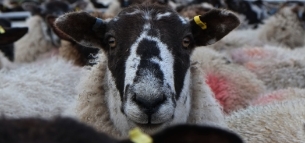Livestock Collection Centres Standards
TRACEABILITY, ASSURANCE STATUS AND TRADING STATUS Version 4.0
Click to view
Key – Those standards which have greater significance (all other standards are normal)
Recommendation – Those which do not affect certification
New – A completely new standard which the member must now adhere to
Revised – A standard that has changed and requires the member to take some different or additional action to before
Upgraded – The standard has been upgraded to a Key standard or from a Recommendation to a full standard
Appendix – Referenced in ‘How you will be measured’. Indicates that additional information is provided in the Appendices, which are available at the end of each section.
MK.TA.1 Key
The site must have an effective traceability system (Revised)
How you will be measured
MK.TA.1.a
MK.TA.1.b
MK.TA.1.c
MK.TA.1.d
MK.TA.1.e
MK.TA.1.f
MK.TA.1.g
- Copy of receipt of submission of records or example from software system
- Complete (paper or electronic) movement records
- Completed forms (including dated signatures)
- Movement records
- Mortality records
MK.TA.2 Key
Incoming livestock must be identified before they leave the farm to ensure they arrive on-site identified in accordance with legislation
How you will be measured
MK.TA.2.a
MK.TA.2.b
MK.TA.2.c
MK.TA.2.d
MK.TA.3
A system is in place to ensure vendors declare key information relevant to assurance, health and welfare
How you will be measured
MK.TA.3.a
Site entry/vendor declaration form
MK.TA.4 Key
Where livestock is claimed to be assured, systems must be in place to verify the assurance requirements
How you will be measured
MK.TA.4.a
MK.TA.4.b
MK.TA.4.c
MK.TA.5
Systems are in place to ensure assured livestock are identifiable from non-assured livestock
How you will be measured
MK.TA.5.a
MK.TA.5.b
MK.TA.6
Systems are place to ensure that assurance status is communicated at point of sale and through the supply chain
